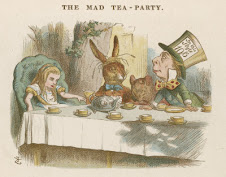In every election, among those who cast their ballots for the candidates of the Democratic and Republican parties, there are no doubt a large percentage who do so against their better judgment and even against their own will. These voters go by many names. Sometimes they are called defensive voters, who cast their ballots for the candidate of one major party so as to defend against the election of the candidate from the other. Others are lesser-of-two-evils voters, who assert that casting a ballot for a third party candidate is "throwing one's vote away." Some are strategic voters, who would rather support an independent or third party candidate but are plagued by the same worries as the defensive voter or the lesser-evilist, and so on.
Though I am, of course, a proponent of third party and independent politics in and for itself, in New York's gubernatorial race, a strong case can also be made for what we might call strategic third party voting. There are likely very few people who have any doubt what the outcome of this contest will be. Democrat Andrew Cuomo leads his nearest rival, Republican Carl Paladino, by twenty to forty percentage points,
according to recent polls. As we approach election day, Democrats have little to worry about and Republicans little to hope for. In other words, the dynamics that motivate defensive voting in favor of the major party candidates are simply not in play in this race.
As I
wrote last week, if you support Democrats because you still believe the myth that they stand for the interests of the middle and working class, that they provide a viable opposition to Republicans, that they stand for social values and justice, there is no question that you should vote for Green Party
gubernatorial candidate Howie Hawkins. On the other hand, if you support Republicans because you still believe the myth that they are opponents of big government, that they stand for individual rights and liberties, and that they provide a viable opposition to the Democrats, there is no question that you should cast your ballot for
Libertarian Party candidate Warren Redlich. Given the state of Democratic-Republican party politics, only the most intellectually dishonest progressives, liberals, conservatives and libertarians could argue with these basic points. However, ideological and philosophical reasoning aside, there is also a strategic reason to support the Green and Libertarian candidates for governor.
If the Green and Libertarian party gubernatorial candidates receive more than 50,000 votes, the Green and Libertarian parties are assured ballot access on all New York ballots for the next four years. Without an assured ballot line going forward, Green and Libertarian candidates for any office would have to engage in a daunting petitioning effort, potentially having to gather thousands of signatures, just to ensure that they appear on the ballot. However, if the Green and Libertarian parties are assured a ballot line, the ballot access hurdle is substantially lower, requiring petitions with dozens rather than thousands of signatures.
Many people who are sympathetic to the third party and independent critique of the two-party state and duopoly system of government often argue that alternatives to the Democratic and Republican parties must be built from the bottom up, beginning at the local level, and they are thus hesitant to support third party candidates for higher offices. However, in New York as in many other states, the Democratic and Republican parties have structured ballot access law such that the optimal political strategy for any third party is to wage difficult campaigns for higher offices they are unlikely to win, in the hopes of assuring ballot access and thus facilitating the efforts of later candidates for lower offices.
According to the
certified ballot of the New York State Board of Elections, this year there are upwards of forty different races in which a Democrat or Republican is running for office unopposed! In dozens of other contests, voters will be faced with a choice between a Democrat and a Republican, which, as we all know, is often effectively equivalent to having no choice at all. Unlike the Working Families Party or the Conservative Party, the Green and Libertarian parties are highly likely to run their own candidates for office rather than simply rubber stamp those offered up by the Democrats and Republicans.
A vote for the Green or Libertarian candidate for governor of New York is a vote in support of political choice and competition. If you are a progressive or liberal who would like to see more liberal and progressive challengers to the reigning two-party state over the course of the next four years, you should cast your ballot for Howie Hawkins, the Green Party candidate for governor. Similarly, if you are a conservative or libertarian who would like to see more conservative and libertarian challengers to the reigning two-party state over the course of the next four years, you should cast your ballot for Warren Redlich, the Libertarian Party candidate for governor. Or are you satisfied with the state of New York State?
Update: I contacted
Richard Winger of Ballot Access News to make sure that I had my facts straight regarding ballot access law. Via email, he agrees that the Green and Libertarian parties would indeed be in a far better position if they qualified for a ballot line, and adds: "
They could then run statewide nominees with no petition at all. But their district and county and municipal candidates would need petitions to get themselves on primary ballots." [Emphasis added.]








